工程流体力学(英文版)第二章.pdf
- 格式:pdf
- 大小:648.63 KB
- 文档页数:53
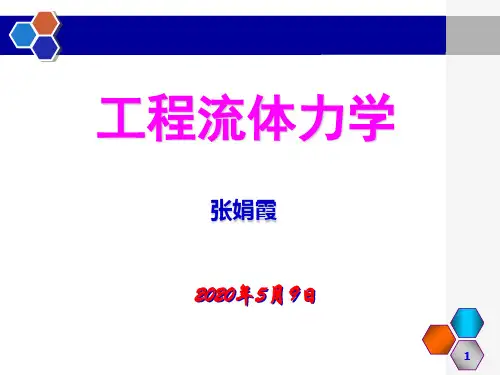
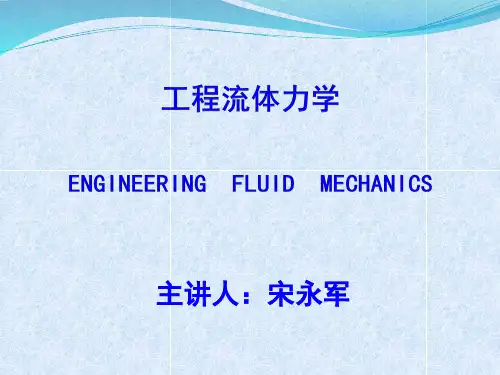
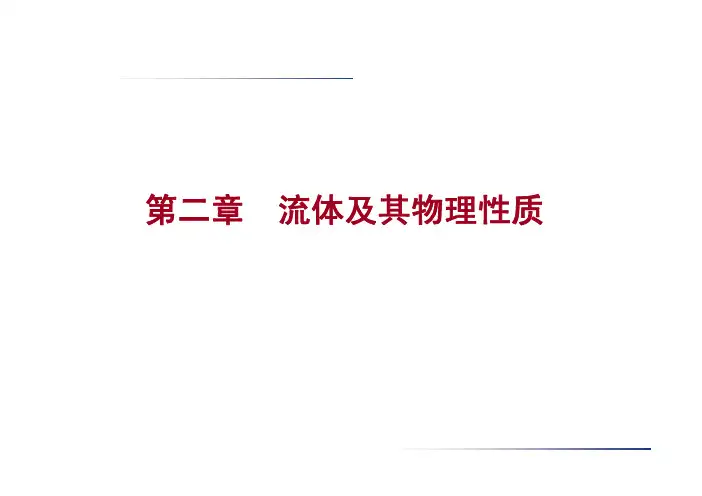
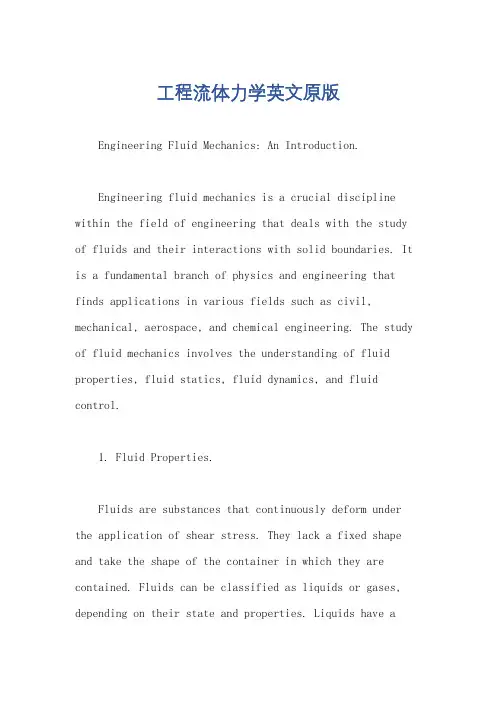
工程流体力学英文原版Engineering Fluid Mechanics: An Introduction.Engineering fluid mechanics is a crucial discipline within the field of engineering that deals with the study of fluids and their interactions with solid boundaries. It is a fundamental branch of physics and engineering that finds applications in various fields such as civil, mechanical, aerospace, and chemical engineering. The study of fluid mechanics involves the understanding of fluid properties, fluid statics, fluid dynamics, and fluid control.1. Fluid Properties.Fluids are substances that continuously deform under the application of shear stress. They lack a fixed shape and take the shape of the container in which they are contained. Fluids can be classified as liquids or gases, depending on their state and properties. Liquids have adefinite volume but no fixed shape, while gases expand tofill the available space.Some important fluid properties include density, viscosity, compressibility, and surface tension. Density is the mass per unit volume of a fluid. Viscosity representsthe internal friction of a fluid and affects its flow behavior. Compressibility describes how a fluid responds to changes in pressure, while surface tension arises from the intermolecular forces at the fluid's surface.2. Fluid Statics.Fluid statics deals with the behavior of fluids at rest, or in equilibrium. It involves the study of pressure distribution in fluids, buoyancy, and hydrostatics.Pressure is a force per unit area acting perpendicular tothe surface, and it is a fundamental quantity in fluid mechanics. Buoyancy is the upward force exerted by a fluid on an immersed object, and it is responsible for thefloating of objects on water. Hydrostatics deals with the equilibrium of fluids under the influence of gravity andother external forces.3. Fluid Dynamics.Fluid dynamics is concerned with the motion of fluids and the forces acting on them. It involves the study of fluid flow, fluid mechanics equations, and fluid control. Fluid flow can be laminar or turbulent, depending on the velocity and other fluid properties. Laminar flow is smooth and orderly, while turbulent flow is chaotic and irregular.The fundamental equations of fluid dynamics include the conservation of mass, momentum, and energy. The conservation of mass states that the rate of change of mass within a control volume is equal to the net mass flow rate into the volume. The conservation of momentum relates the forces acting on a fluid element to its acceleration, while the conservation of energy accounts for the conversion of energy forms within a fluid system.4. Fluid Control.Fluid control involves the manipulation and manipulation of fluid flow using pumps, valves, and other devices. Pumps are used to increase the pressure or flow rate of a fluid, while valves are used to control the direction or amount of fluid flow. Other devices such as nozzles, diffusers, and turbines are also employed to modify fluid flow characteristics.In conclusion, engineering fluid mechanics is a crucial discipline that deals with the study of fluids and their interactions with solid boundaries. It involves the understanding of fluid properties, fluid statics, fluid dynamics, and fluid control. This knowledge is essentialfor engineers to design, analyze, and optimize fluid systems in various engineering applications.。

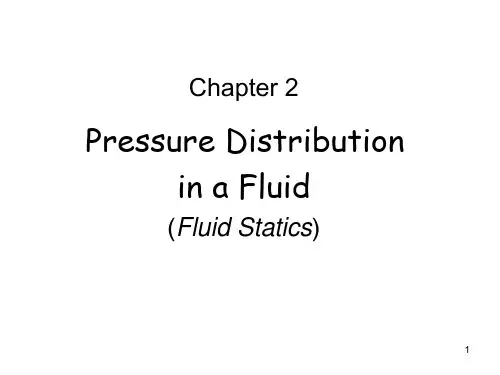


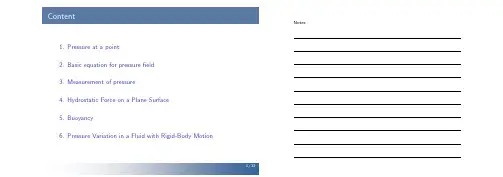
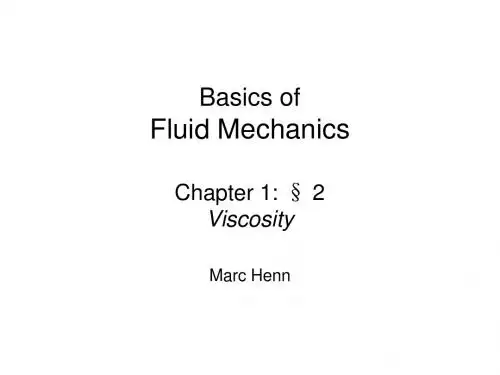
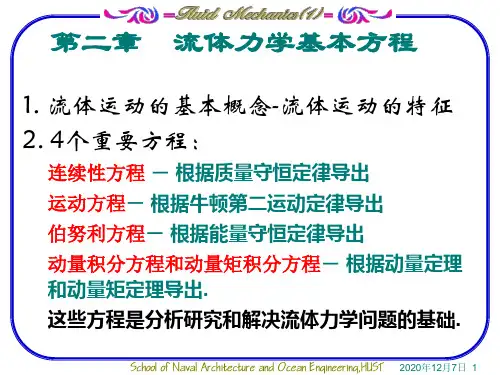
《工程流体力学》课程教学大纲(双语)一、课程基本信息课程代码:050246课程名称:工程流体力学英文名称:Engineering Fluid Mechanics课程类别:专业基础课specialized basic course学时:54Class hours: 54学分:3.0Credits: 3.0适用对象: 热能与动力工程专业的学生考核方式:考试(平时成绩占总成绩的30%)先修课程:高等数学,大学物理,工程力学Pre-sessional course: Advanced Mathematics, University Physics, Engineering Mechanics二、课程简介工程流体力学是研究流体(包括气体和流体)的平衡和运动规律的科学。
它是一门横跨各领域,各不同专业的重要技术基础课。
能源、动力、环境、设备、化工,航空、国防等领域均需要流体力学知识。
热能与动力工程专业学生尤其需要流体力学知识作为工程设计或从事其他专业技术工作的理论基础。
通过本课程的学习,使学生掌握流体力学的基本概念,基本原理和实验技能,为将来的学习和工作打下基础。
本课程的前四章为双语教学。
Course Description:Engineering Fluid Mechanics is the science of the law of equilibrium and motion of fluids, which include gases and liquids. It is an important basic technical course stretching across various field and various specialty. A knowledge of fluid mechanics is required in various fields such as energy, power, environment, industry, chemistry, building, aviationand national defense, etc. Students of Thermal Energy and Power Engineering Specialty need the knowledge of fluid mechanics in Engineering design or other technical work. This course provides students with basic concepts,basic theories and experimental techniques of fluid mechanics needed in future study or work. Chapter 1 to chapter 4 will be taught in both Chinese and English (bilingual education).三、课程性质与教学目的本课程是热能与动力工程专业的专业基础课。
工程流体力学(英文版)简介.pdf工程流体力学(英文版)Science and Technology University of BeijingEngineering Fluid Mechanics(::: 1215B liuxj@工程流体力学(英文版)Preface1 Concept of Fluid Mechanics2 Development and Application of Fluid Mechanics3 Research Method of Fluid Mechanics3 Contents5 Reference工程流体力学(英文版)1 Concept of Engineering Fluid MechanicsWhat is Fluid?liquidsgasessolidWhat is Fluid Mechanics?Fluid Mechanics is a branch of Applied (macro-) Mechanics:1.To study the principles of the statics and motion of liquids andgases.2. To study the action of solid on fluid.3. To study the applications of these principles.FluidEngineering Fluid Mechanics工程流体力学(英文版)Development and Application of Fluid Mechanics 1 The FirstSatge(before 17th century) (256 BC) Dujiangweir conservancy project (250 BC)Archimedes Principle ClepsydraSail windmillWater Wheel工程流体力学(英文版)2 The Second Satge(17-19th century)In 1647, Pascal staticsPrincipleIn 1678, Newtonian Stress equationIn 1738, Bernoulli EquationIn 1775, Euler built basic equation of ideal fluidIn 1781, Lagrange advanced stream functionIn 1826, N-S equation.In 1876, Reynolds found : laminar flow and turbulent flow. In 1858, Helmolholztheory of motion vortex.in 1887, Separation theory of flow around bodyIn the end of 19th century, the theory of similarity工程流体力学(英文版)2 The Third Satge(20th century)In 1902, KuttaPrincpleIn 1904, Prandtlboundary layer theoryIn 1910-1945, aerodynamics theories and experimentsIn 1912, Karman Vortex streetIn 1921, Momentum Integral EquationIn 1954, Theory of turbulent flow工程流体力学(英文版)2 The Fourth SatgeTwo key points:(Middle 20th century-) Turbulence , Vortex and unsteadyflowApplications:hydraulic engineering, civil engineering, communication transportation, machinery manufacture, petrol exploitation, chemical engineering and biological engineering 工程流体力学(英文版)Application:Avationand navigation Engineering工程流体力学(英文版)Application:hydraulic structure water工程流体力学(英文版)Application:ocean engineering,工程流体力学(英文版)Application:mechanical engineering工程流体力学(英文版)road and bridge engineering工程流体力学(英文版)Application:conservancy engineering工程流体力学(英文版)urban flood and prevention工程流体力学(英文版)chemical engineering工程流体力学(英文版)gg336x280();-1024-0-4081-1024.jpg“ alt="工程流体力学(英文版)简介.pdf" /Automobile工程流体力学(英文版)power station; metallurgy engineering,工程流体力学(英文版)gg336x280();3_892.5-777-0-3672-777.jpg" alt="工程流体力学(英文版)简介.pdf" /Others:工程流体力学(英文版)3 Research Method of Fluid MechanicsTheoretical Research MethodExperimental Research MethodComputational Research MethodComputationalTheoretical Fluid MechanicsExperimental Fluid MechanicsExperimentalComputational Fluid MechanicsComputational。